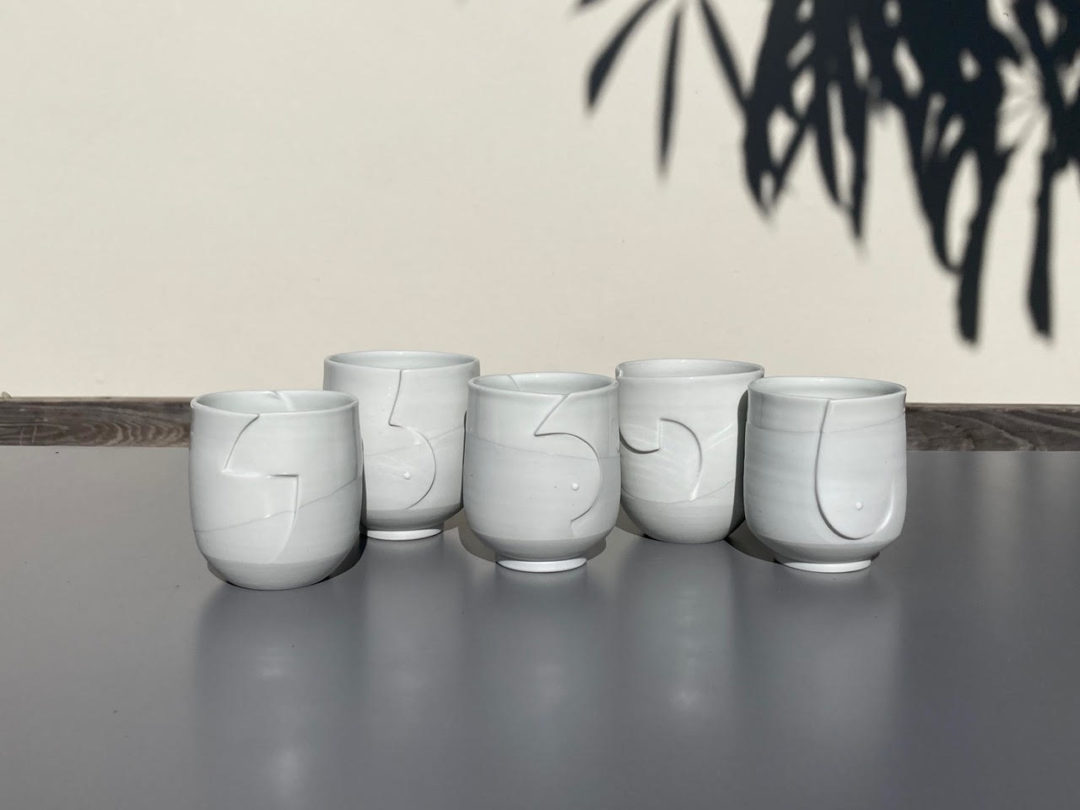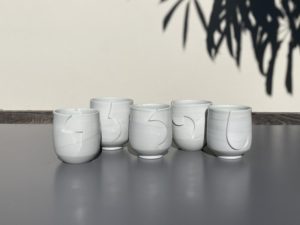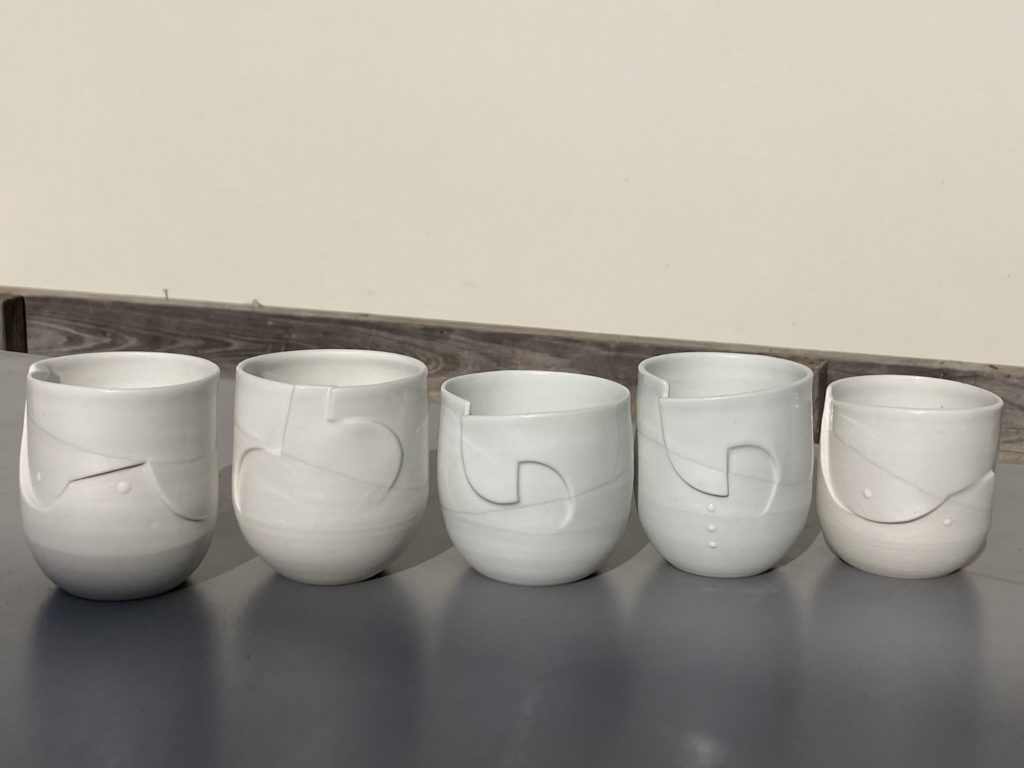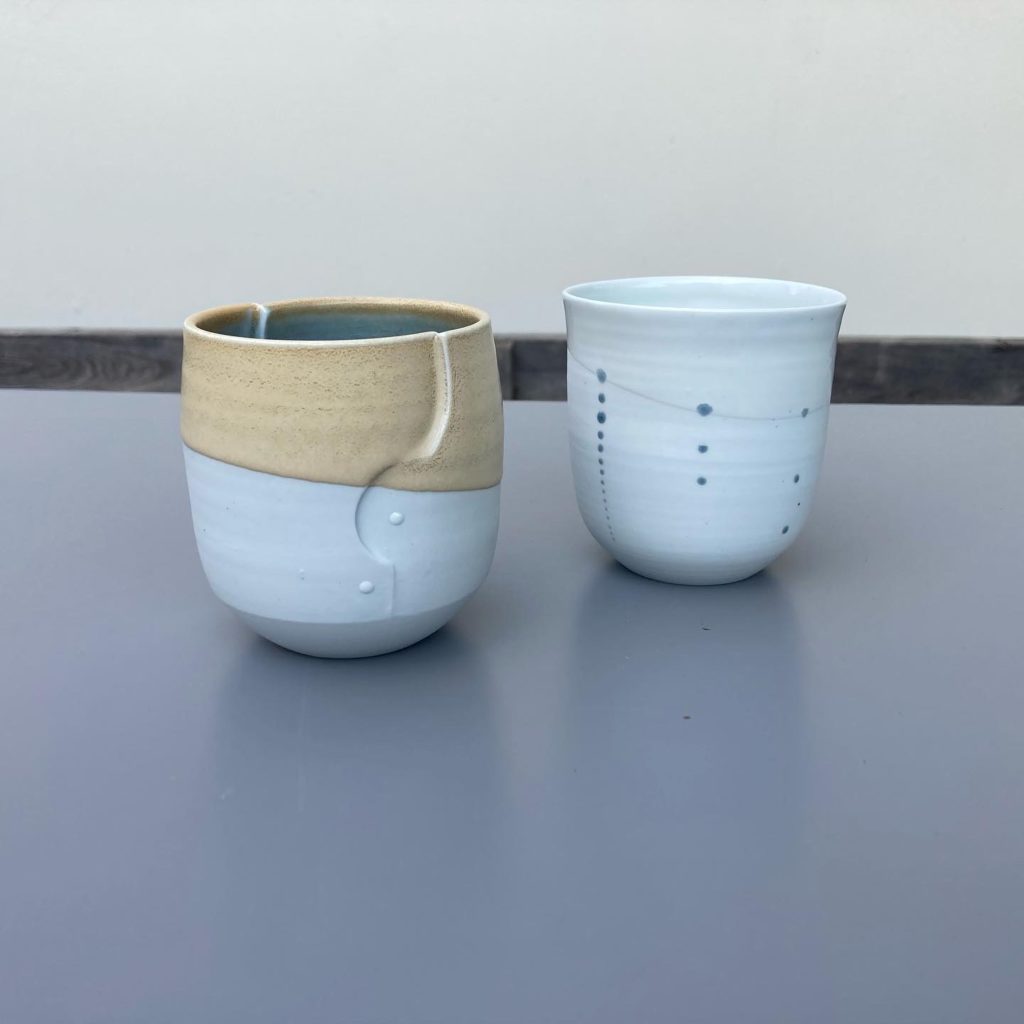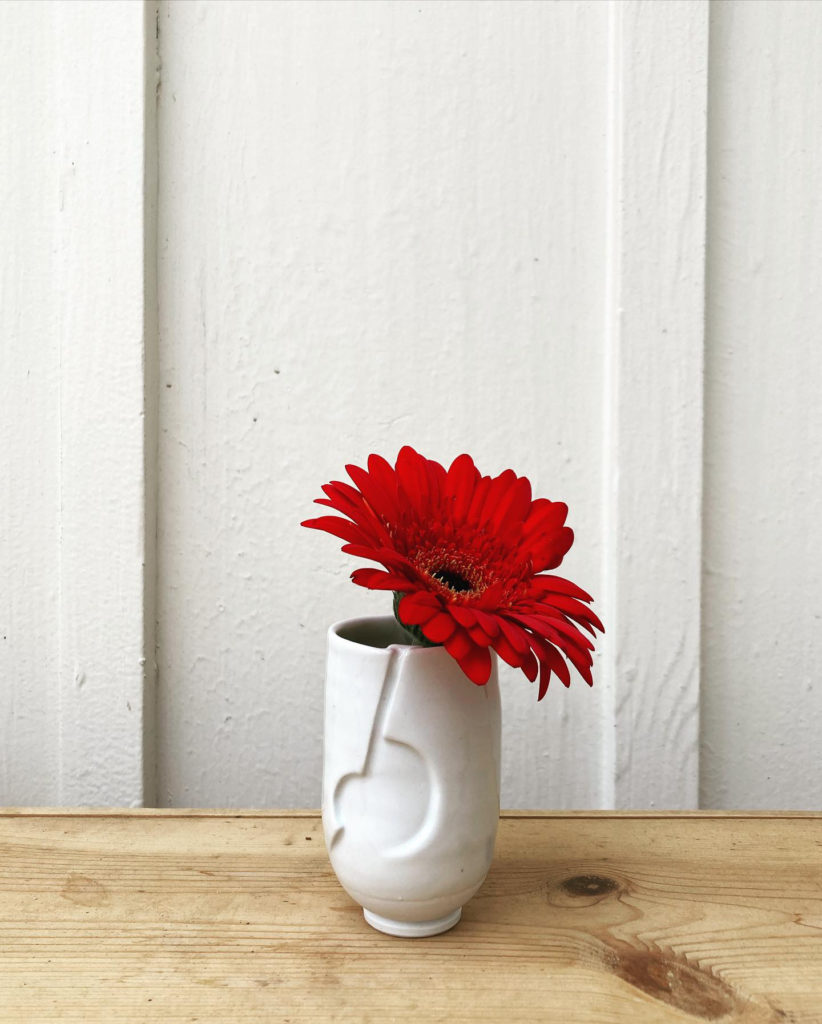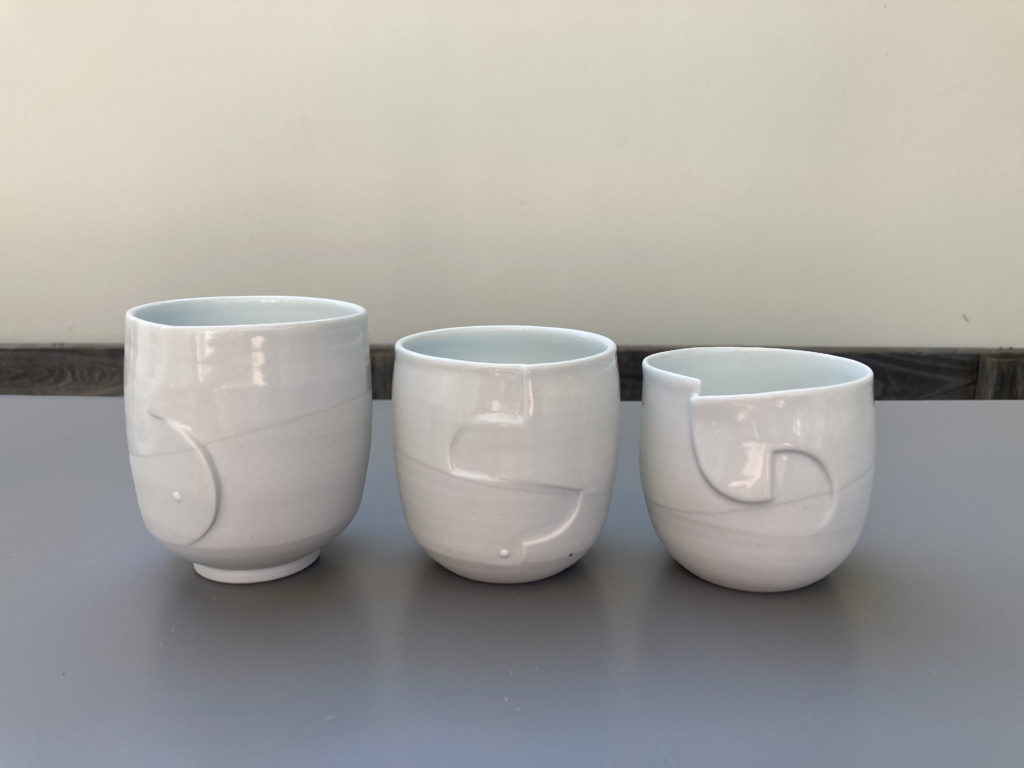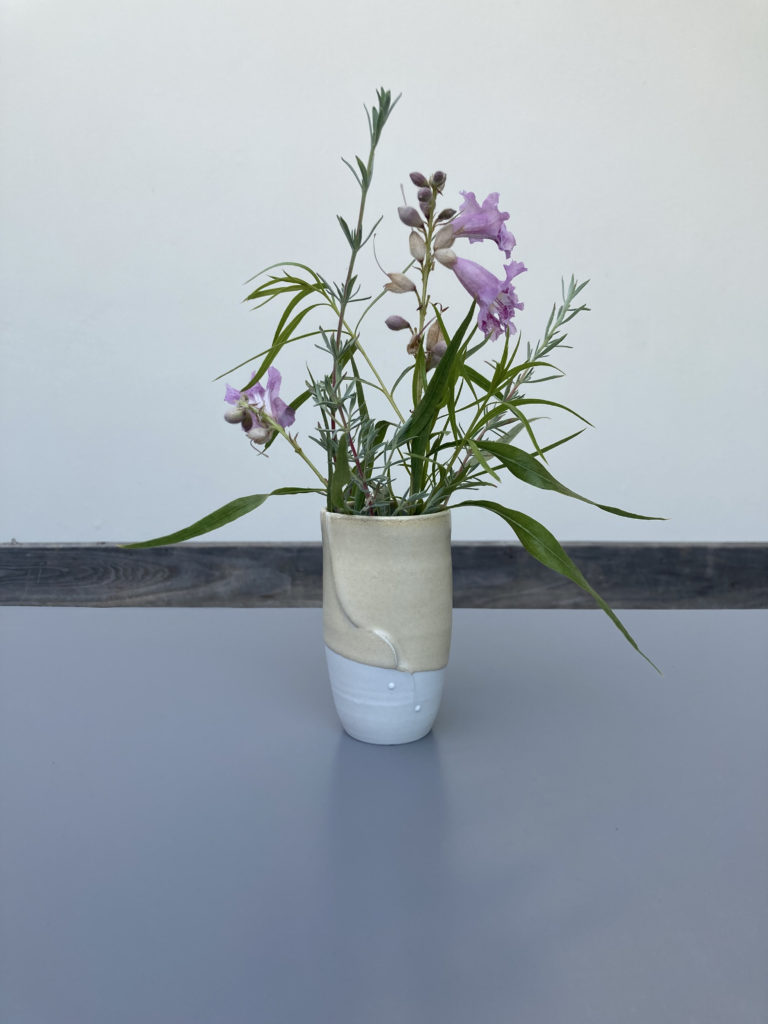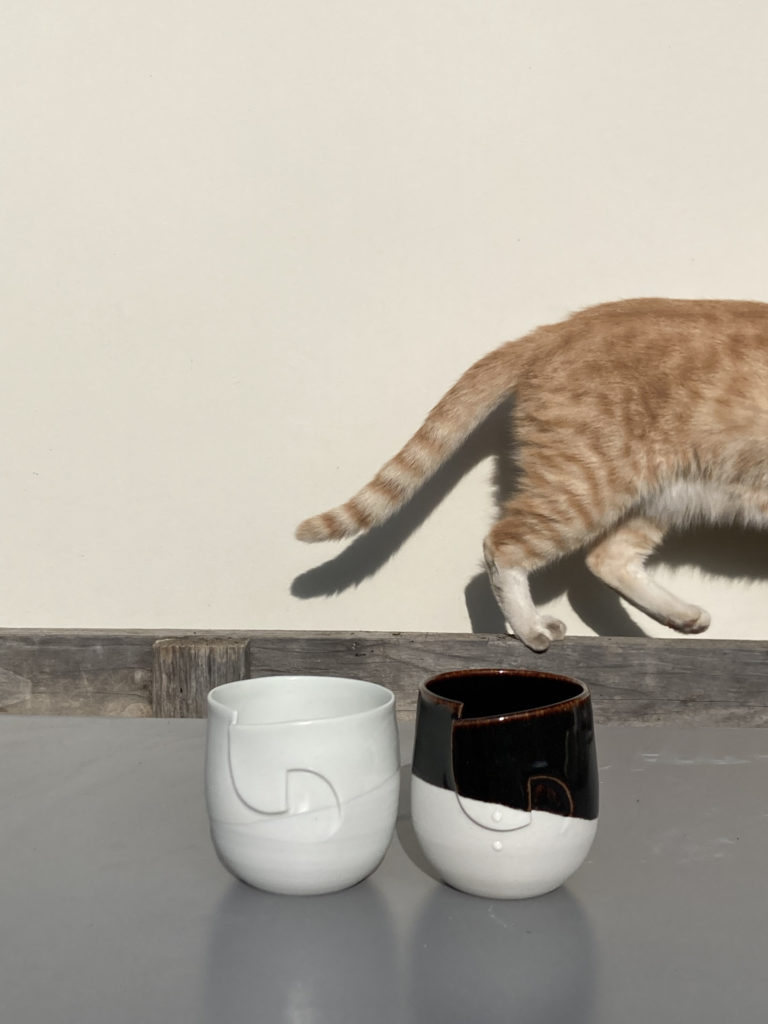Lara Odell
I am a potter working in porcelain, firing at cone 10 reduction. My wheel-thrown and altered pottery is both functional and sculptural and is intended for everyday use. My aesthetic could be associated with “geometric abstraction,” as I draw inspiration from the geometric structural underpinnings and patterns of both the natural world (geologic and botanical structures) and architecture and design (specifically Art Deco and Mid-century modern). I am also inspired by dazzle camouflage, Sonia Delaunay’s entire oeuvre, and the philosophies developed and followed by the Bauhaus School. I like to experiment with visual puzzles, drawing attention to how perception of spacial depth vs. flatness can be played with and confused, bringing an awareness to our objective and subjective limitations. My challenge is to design and engineer pottery that is utilitarian while simultaneously embodying a puzzle piece-like visual and tactile aesthetic for the senses.
I have art degrees from the School of Art and Design at Alfred University, SUNY Buffalo and UC Irvine.
I was a recipient of the Arts Council for Long Beach’s Professional Artist Fellowship in 2016 and 2009. I also make commercial illustration, drawings, cartoons, artists’ books, experimental movies, and am an amateur cellist.

